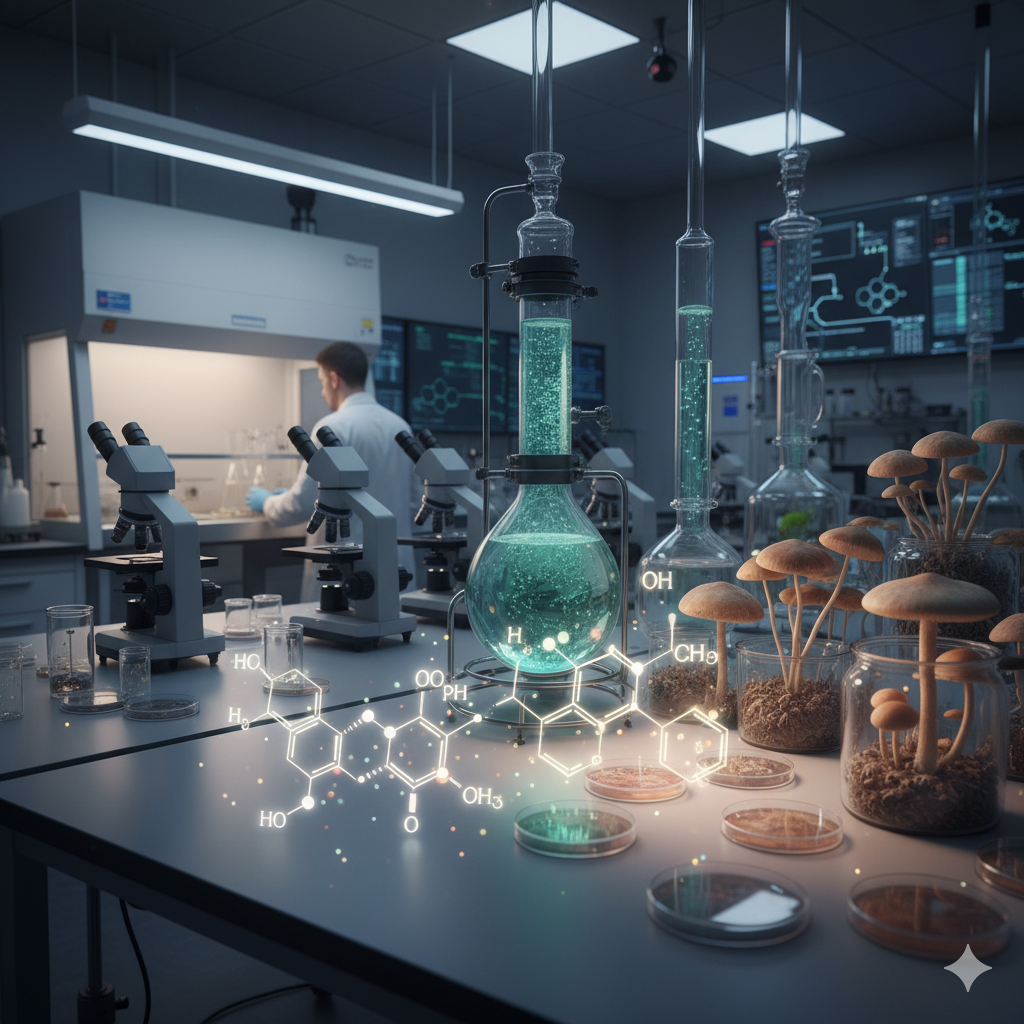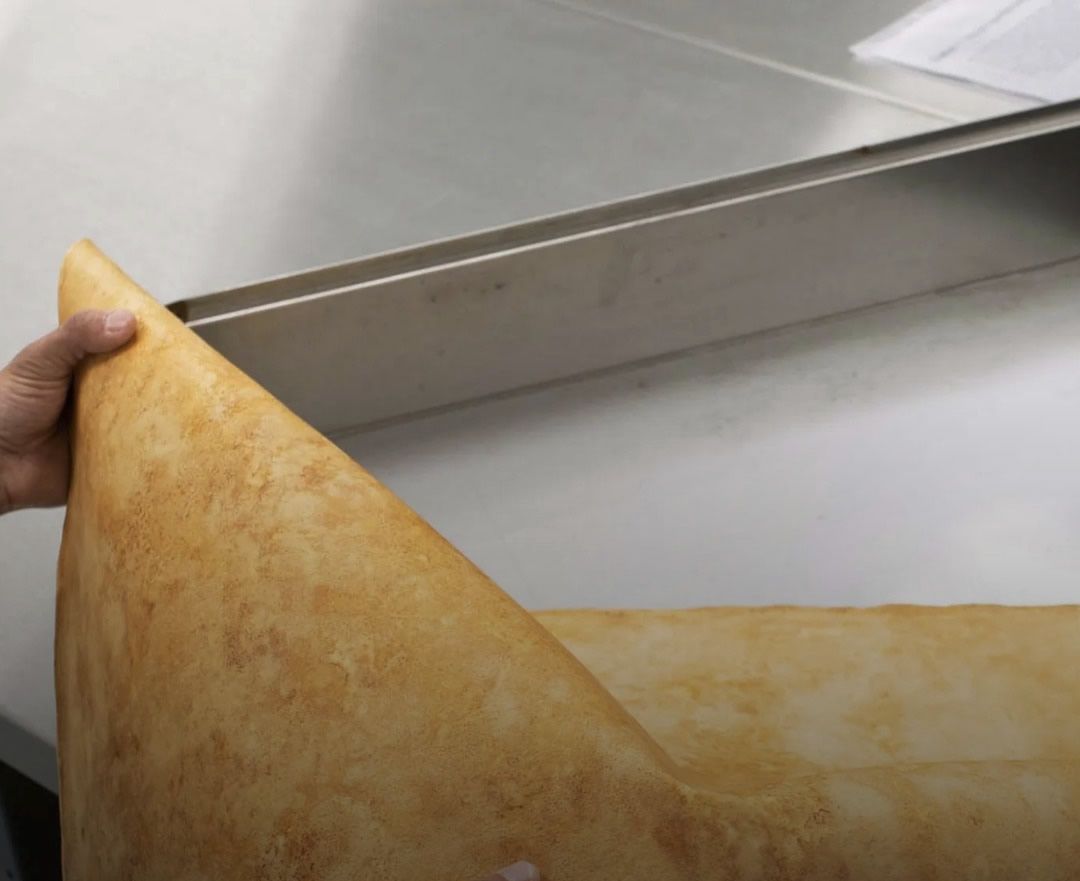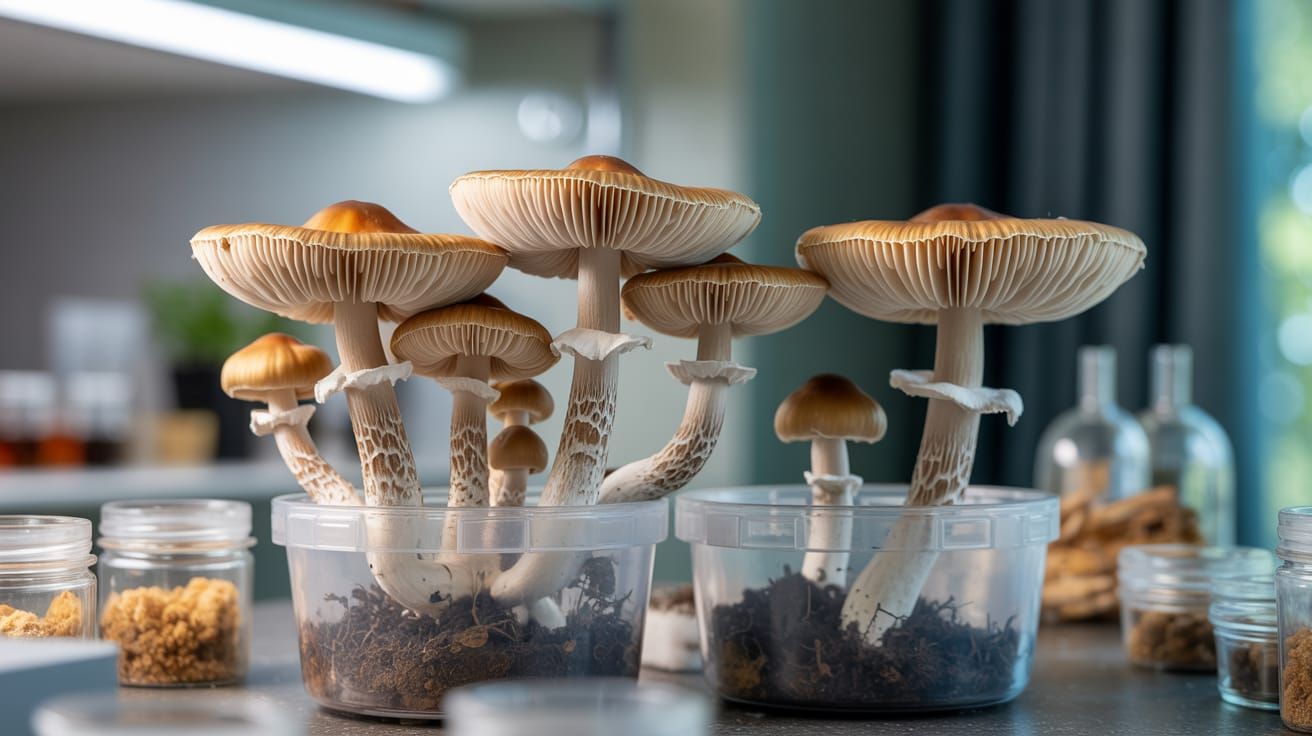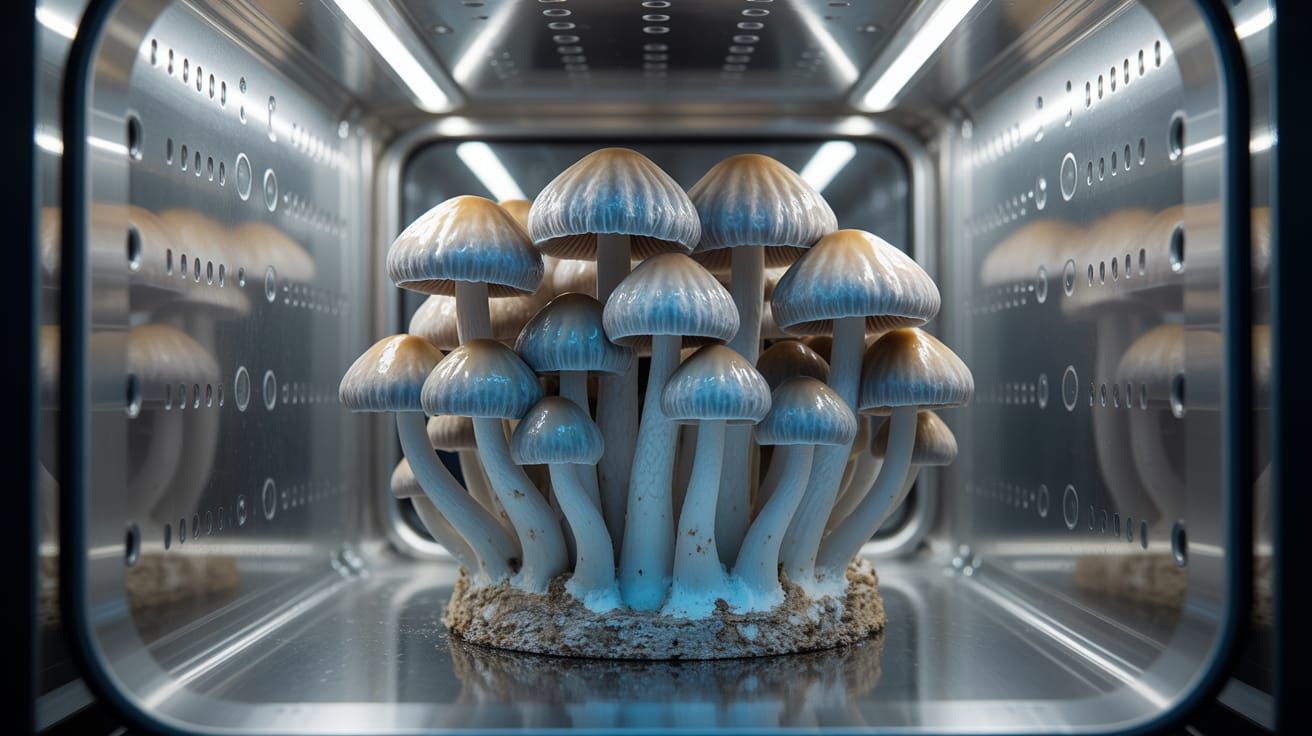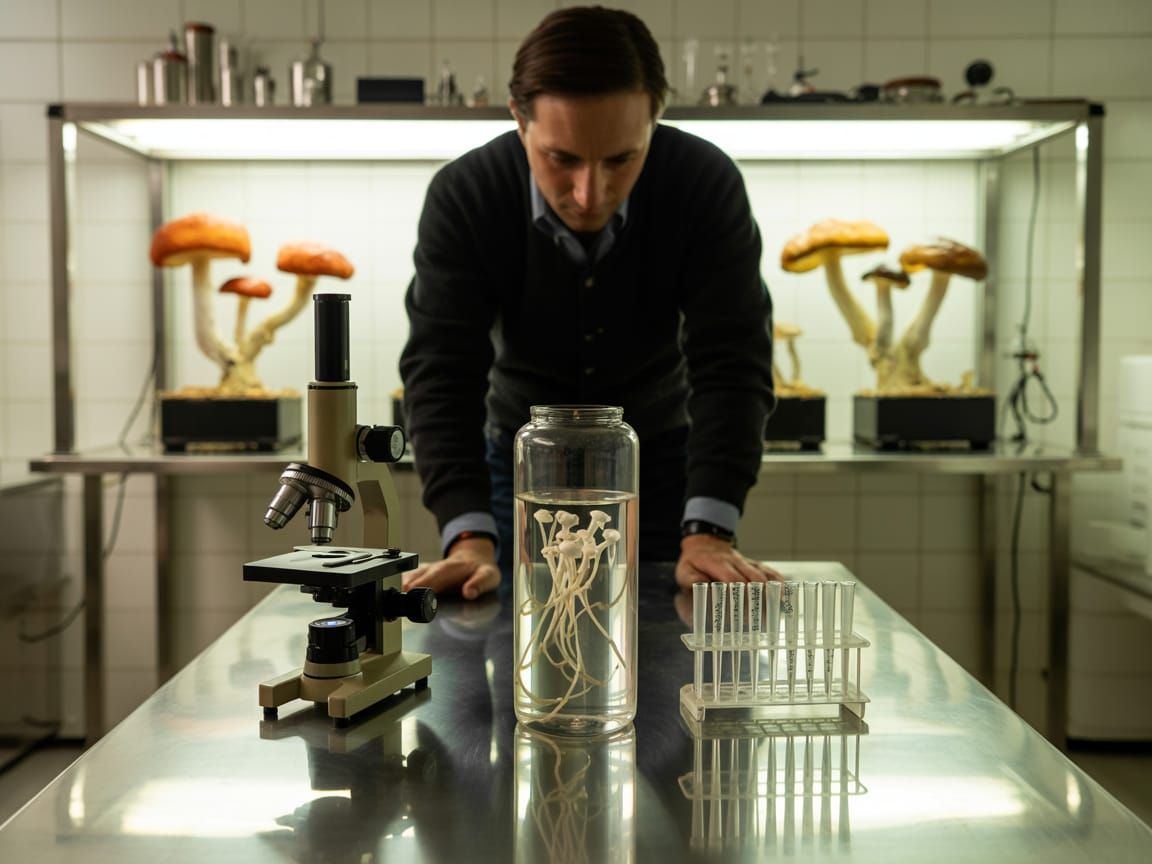Clumping 101: What it is and how to handle it
Tackling Clumping in Spore Syringes
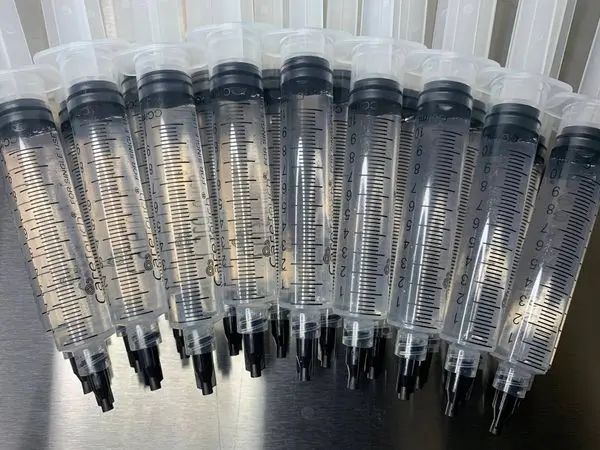
If you’ve ever worked with spore syringes, you’ve likely noticed something curious: clumps of spores floating around in the liquid. At first glance, it can seem alarming—like something might be wrong with the syringe—but don’t worry. Clumping is completely normal and a natural characteristic of fungal spores. In this article, we’ll dive deep into what causes clumping, how to manage it, and why it’s not a dealbreaker for your mycology projects. Of course, we’ll also highlight where to source high-quality spore syringes and liquid cultures: Spores101.co and InfinityLC.cc.
What Is Clumping in a Spore Syringe?
Clumping occurs when spores stick together in visible clusters rather than dispersing evenly throughout the liquid in the syringe. Spores are inherently hydrophobic, meaning they repel water. This hydrophobic nature causes them to naturally aggregate, forming clumps that can be tricky to break apart.
Here’s the key thing to know: clumping does not indicate that your spore syringe is contaminated or of low quality. In fact, seeing clusters of spores can be a sign that your syringe contains a robust amount of spores—a good thing for microscopy work or agar inoculations. If you’ve purchased your syringe from a reliable source like
Spores101.co, you can trust that what you’re seeing is completely normal.
Why Do Spores Clump Together?
To understand clumping, it helps to know a bit about the biology of spores.
- Hydrophobic Nature: As mentioned, spores are hydrophobic. This means water molecules don’t easily adhere to their surface, and instead, the spores tend to stick to one another.
- Protective Coatings: Spores have a tough outer layer called the spore wall, which protects them from environmental stresses. This outer layer contributes to their hydrophobicity, making them naturally prone to clumping.
- Density of Suspension: In a spore syringe, millions of spores are suspended in sterile water or a nutrient solution. The high concentration of spores can lead to increased clumping as they jostle together.
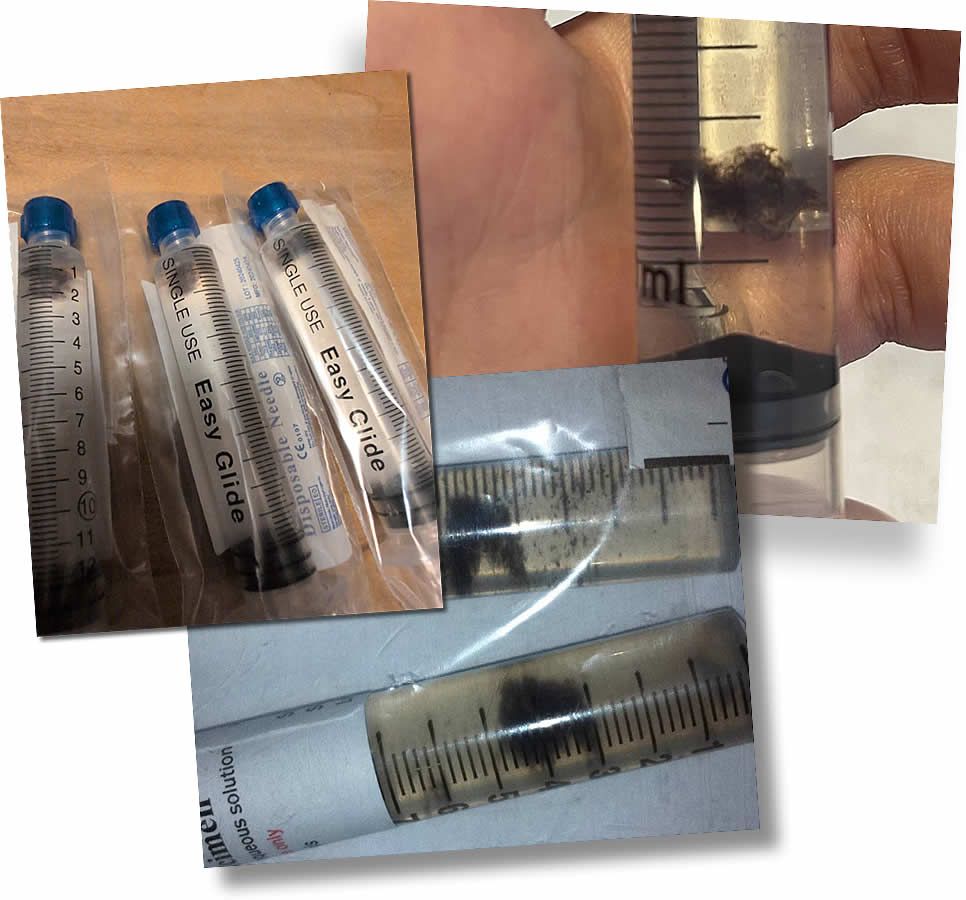
Does Clumping Affect Your Mycology Projects?
The short answer? Not really. While clumping can make it slightly harder to achieve an even distribution of spores when inoculating, it doesn’t inherently harm your project. The key is knowing how to work with the syringe to get the most out of it. That said, if you’re planning to inoculate grains directly with a spore syringe, clumping can exacerbate the already high risk of contamination. (Pro tip: don’t use spore syringes for grain inoculation; we’ll touch on this more in a bit.) Instead, spore syringes are best suited for agar work, where you can isolate clean, healthy mycelium and avoid contamination pitfalls.
How to Handle Clumping in Spore Syringes
If you’re dealing with a clumpy spore syringe, there are a few simple techniques to help break up the clumps and distribute the spores more evenly:
- Shake It Like You Mean It: Before using your syringe, give it a vigorous shake. This can help disperse the spores throughout the liquid. If the clumps are particularly stubborn, tap the syringe gently against your hand to loosen them.
- Warm It Up: Spores tend to clump more in cold temperatures. Let the syringe sit at room temperature for a while before use. If the syringe has been refrigerated, this step is especially important.
- Use Sterile Technique: If you’re working in a sterile environment (and you should be), you can inject the spore solution into a sterilized vial or tube and use a sterile tool to manually break up the clumps. Just be sure to maintain proper sterility to avoid contamination.
- Dilution: While not always necessary, you can dilute the spore syringe solution with sterile water to reduce clumping. This is particularly useful for microscopy work, where even distribution is critical.
Why Spore Syringes Aren’t Ideal for Grain Inoculation
One of the most common beginner mistakes is using a spore syringe to inoculate grains. Here’s why this isn’t recommended:
- Contamination Risk: Spores are in a dormant state, meaning they need time to germinate. During this period, contaminants like mold and bacteria can outcompete the spores and ruin your project.
- Genetic Diversity: A spore syringe contains millions of spores with varying genetics. When introduced to grains, multiple strains may compete, leading to slower colonization or weaker mycelium.
For grain inoculation, liquid culture (LC) is a far better option. LC syringes, like those from InfinityLC.cc, contain live, active mycelium that’s ready to colonize your grains immediately. This reduces contamination risks and speeds up the entire process.
Using Spore Syringes for Agar Work
Spore syringes truly shine when used for inoculating agar plates. Here’s a quick overview of the process:
- Prepare Your Agar: Pour sterilized agar into petri dishes and let it solidify.
- Inoculate: Shake your spore syringe, flame-sterilize the needle, and place a small drop of spore solution onto the agar. Use a sterile loop to spread the spores if desired.
- Seal and Label: Cover the dish, seal it with parafilm, and label it with the species and inoculation date.
- Incubate: Store the plates at the appropriate temperature (usually 75-80°F) and monitor for mycelium growth over the next 7-14 days.
Once you’ve isolated healthy mycelium on agar, you can transfer it to grains or even create your own liquid culture. This approach gives you control over genetics and minimizes contamination.
Personal Experience with Clumping
When I first started out, I made the rookie mistake of assuming clumping meant my spore syringe was bad. I panicked, contacted the vendor, and complained. Thankfully, I had purchased from Spores101.co, and they kindly explained that clumping is completely normal. After following their advice to shake the syringe properly and warm it up, I was able to inoculate my agar plates without any issues.
This experience taught me two things: always buy from reputable sources like Spores101.co, and don’t be afraid of clumping. It’s just part of the process.
Quick Tips for Success
- Always Shake the Syringe: Even distribution is key for successful inoculation.
- Use Agar for Spores: Agar plates are the best way to isolate clean mycelium from a spore syringe.
- Switch to LC for Grains: For grain inoculation, use a liquid culture from InfinityLC.cc to save time and reduce contamination.
- Stay Sterile: A clean workspace is non-negotiable in mycology. Invest in a still air box or flow hood if you’re serious about cultivating.
Mycology Glossary
- Agar: A gelatinous growth medium used to culture spores and mycelium.
- Contamination: The presence of unwanted microorganisms in your culture.
- Hydrophobic: A property of spores that causes them to repel water.
- Liquid Culture (LC): A nutrient-rich solution containing live, active mycelium.
- Mycelium: The vegetative part of a fungus, made up of thread-like hyphae.
- Spore Syringe: A syringe containing fungal spores suspended in a liquid solution.
Clumping in spore syringes is a natural and manageable aspect of mycology. With the right techniques and trusted sources like Spores101.co for spore syringes and InfinityLC.cc for liquid cultures, you’ll be well-equipped to handle clumps and cultivate successfully. Remember: understanding the tools of the trade is half the battle. Happy cultivating!




